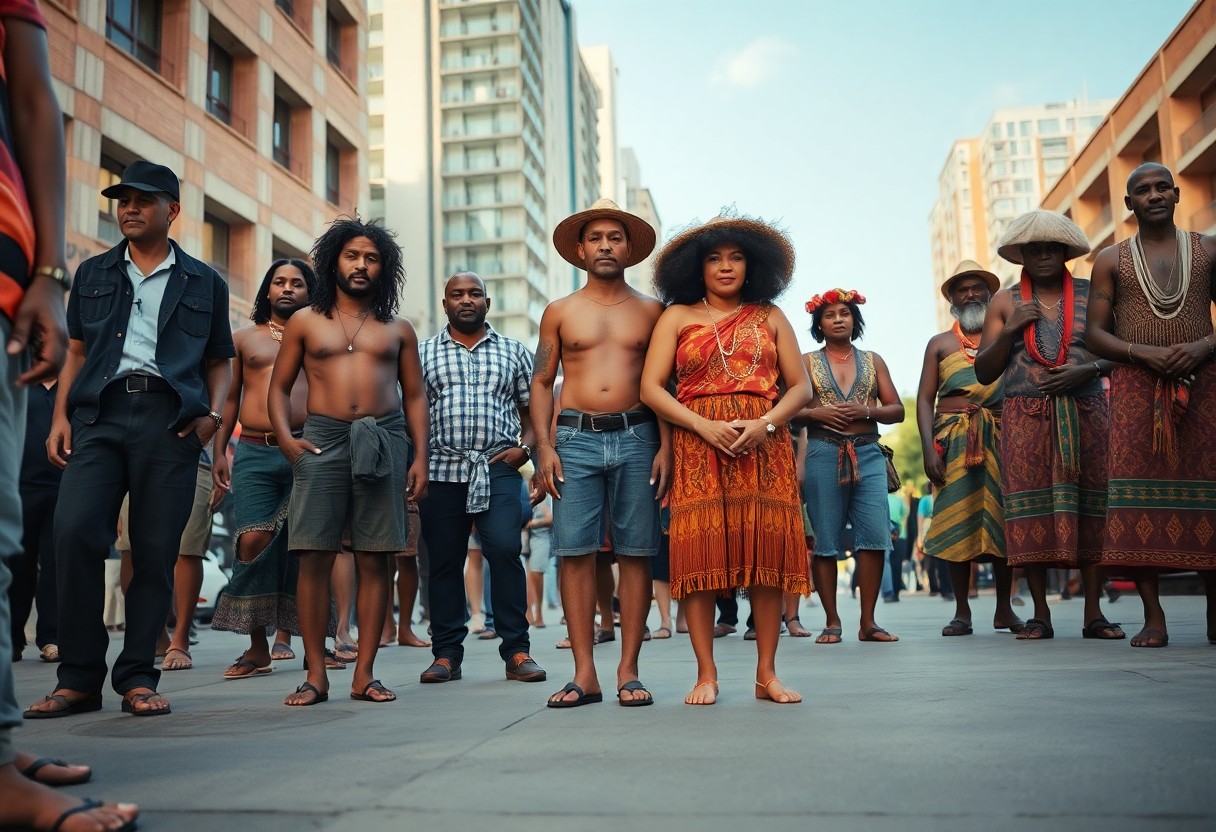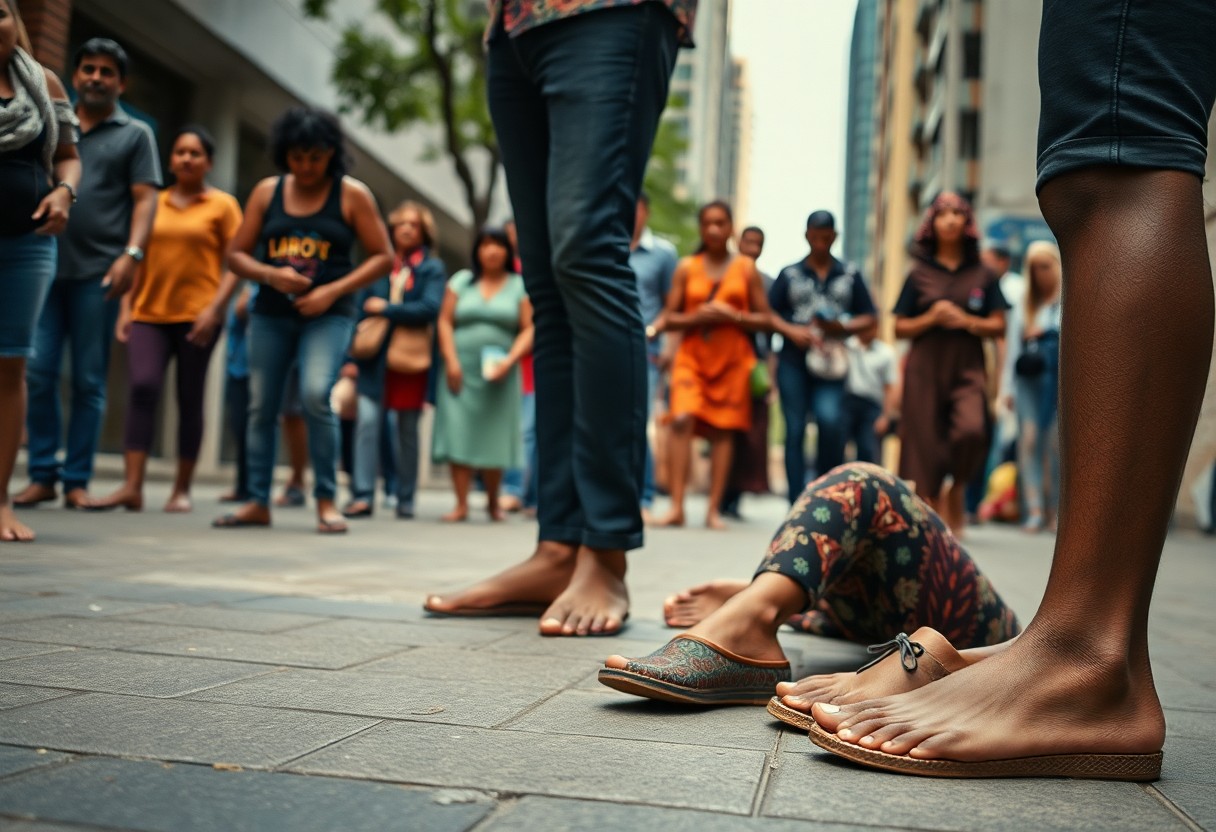
Exploring the fascinating world of barefoot footwear through the lens of cultural anthropology unveils captivating narratives that connect the rich traditions of Aboriginal cultures with the dynamics of contemporary urban life. This intriguing journey allows you to unearth how cultural beliefs and practices surrounding minimalist footwear shape our understanding of comfort, our bond with nature, and avenues for self-expression. By delving into these themes, you enrich your knowledge and inspire a reevaluation of how your footwear choices can mirror profound cultural significance and reflect personal identity.

Connecting Ancient Footwear Traditions with Modern Innovations
The modern footwear industry is a vibrant tapestry that interweaves ancient traditions with groundbreaking innovations, fostering a growing appreciation for barefoot footwear. This journey not only pays tribute to traditional indigenous techniques but also seamlessly adapts them to accommodate your contemporary lifestyle. By acknowledging the importance of historical practices, you can uncover an exciting synthesis of cultural respect and practical aesthetics in your daily footwear choices. This exploration not only enriches your personal style but also allows you to pay homage to the traditions that have shaped our understanding of footwear.
Comparing Indigenous Foot Conditioning Techniques with Modern Practices
Across diverse global indigenous cultures, unique conditioning techniques have been utilised to fortify feet for various terrains. Time-honoured practices, such as walking barefoot across diverse surfaces, have effectively enhanced the arches and muscles in ways that many contemporary interpretations often fail to replicate. Although modern minimalist footwear may strive to replicate these benefits, they rarely offer the authentic experience of direct contact with the earth, which is pivotal for cultivating natural foot strength and flexibility. Engaging with these traditional practices provides a holistic perspective on foot health that modern designs frequently overlook, inviting a deeper understanding of our connection to the ground beneath us.
Tracing the Historical Development of Military Footwear: From Ancient Caligae to Contemporary Tactical Boots
The history of military footwear is a compelling narrative of evolution and innovation, transitioning from the durable Roman caligae, designed for resilience and traction, to today’s tactical boots that blend protection with agility and comfort. A thorough examination of these transitions reveals a consistent theme: in demanding environments, functionality is of utmost importance, necessitating gear that enhances soldiers’ endurance and mobility.
The Roman caligae exemplified an advanced approach to military needs, crafted from robust leather and featuring an open-toe design for optimal breathability. This ancient footwear boasted thick soles that effectively absorbed shock and provided crucial traction, essential in combat scenarios. Fast-forward to the present day, and tactical boots are now constructed with advanced materials such as Kevlar and waterproof membranes, significantly boosting durability and performance. These modern designs incorporate padded collars and sophisticated cushioning systems to mitigate injuries during demanding military operations. Appreciating the legacy of military footwear highlights how these historical styles have paved the way for present-day innovations, merging heritage, practicality, and cutting-edge technology to meet the evolving requirements of contemporary warriors.

Understanding the Urban-Rural Footwear Divide: Cultural Insights
The distinct footwear choices made in urban and rural contexts reveal significant cultural and practical disparities. Urban environments often prioritise style and brand identity, while rural settings may focus on practicality and durability. As barefoot footwear gains popularity, urban residents increasingly adopt its minimalist design as both a fashion statement and a means to achieve perceived health benefits. Conversely, individuals in rural areas may remain hesitant, influenced by traditional values and the practical demands of their surroundings.
Identifying Key Trends in Urban Adoption of Barefoot Footwear
In urban areas, a notable shift towards embracing barefoot footwear is taking place, with adoption rates steadily rising over the past decade. This trend is driven by various factors, including heightened health awareness, a growing interest in natural movement, and the impact of fitness trends such as yoga and running. Recent surveys reveal that approximately 35% of urban residents have actively sought out barefoot-style shoes, illustrating a cultural shift towards embracing innovative body mechanics and enhancing overall well-being.
Exploring Gender-Based Barriers to Adoption: Who is Leading the Charge?
Gender dynamics play an essential role in the acceptance of barefoot footwear, as different motivations influence the choices of men and women. Women often encounter greater societal pressures concerning fashion and aesthetics, which may hinder their willingness to embrace minimalist styles. In contrast, men may be more driven by the performance and health benefits associated with these shoes, resulting in higher adoption rates among the male demographic.
A closer examination of the gendered aspects of barefoot footwear adoption reveals that societal expectations significantly shape women’s decisions. Women frequently navigate a landscape where ideals of beauty and fashion overshadow practical health advantages. Research indicates that approximately 45% of men in urban settings are inclined towards barefoot shoes, compared to only 30% of women. Female consumers often grapple with balancing aesthetics and functionality, making them more cautious in evaluating the design of barefoot footwear against their desire for comfort and support. By empowering women through targeted awareness campaigns and showcasing fashionable barefoot options, there exists potential to increase willingness to engage with this trend, thereby reshaping urban footwear narratives and promoting inclusivity across genders.

Revolutionary Technologies Shaping the Future of Barefoot Footwear
As the demand for barefoot footwear continues to grow, pioneering technologies are poised to transform your approach to comfort and performance. Innovations in materials science and personalised fitting techniques will not only enhance functionality but also tailor your walking experience, merging traditional wisdom with contemporary design principles. We are entering an exciting era where your footwear becomes as unique as the journey it accompanies, resulting in improved comfort and performance.
Utilising 3D Scanning Technology for an Optimal Fit
The rise of 3D scanning technology is revolutionising the way barefoot footwear is customised, facilitating a precise fit that conforms to your individual foot shape. Instead of settling for generic sizes, your shoes can be intricately crafted to align with the unique contours of your feet, significantly enhancing comfort while minimising the risk of injury. The availability of custom-fit options will not only elevate your walking experience but also make barefoot shoes accessible for individuals with diverse foot shapes and sizes.
Integrating Smart Sensors: The Next Frontier in Footwear Technology
The integration of smart sensors into barefoot footwear is set to redefine the industry by embedding technology directly into the soles. These innovative features can monitor a variety of metrics, from distance travelled to foot pressure, providing you with invaluable insights to optimise your walking or running habits. Equipped with real-time data, you can adjust your activities to enhance performance and safeguard your well-being.
Imagine having access to real-time analytics as you walk or run. Smart sensors can track your gait, alerting you to any irregularities that could lead to injury. Some forward-thinking brands are already developing footwear capable of analysing your foot's impact on various terrains, offering personalised recommendations for style or cushioning adjustments on the spot. This groundbreaking integration fuses smart technology with the traditional barefoot philosophy, ensuring you maintain a natural stride while leveraging the latest advancements in wearable tech. The potential to enhance sports performance, support rehabilitation, and improve everyday comfort is boundless, fundamentally reshaping how you interact with your environment with every step.
Contemplating the Journey of Barefoot Footwear
Your exploration of the cultural anthropology surrounding barefoot footwear reveals a rich narrative woven from the threads of Aboriginal traditions to modern urban practices. By embracing the principles of natural movement and fostering a connection to the earth, you gain valuable insights into how this footwear philosophy transcends mere fashion, profoundly influencing lifestyle choices and community values. As you reflect on these diverse perspectives, consider how your footwear choices can embody and promote a deeper understanding of cultural heritage and adaptability in today's world.
The Article Cultural Anthropology of Barefoot Footwear: From Aboriginal Traditions to Modern Urban Adoption appeared first on My Shoes Finder
The Article Cultural Anthropology of Barefoot Footwear: Traditions to Today Was Found On https://limitsofstrategy.com
The Article Cultural Anthropology of Barefoot Footwear Through the Ages found first on https://electroquench.com







